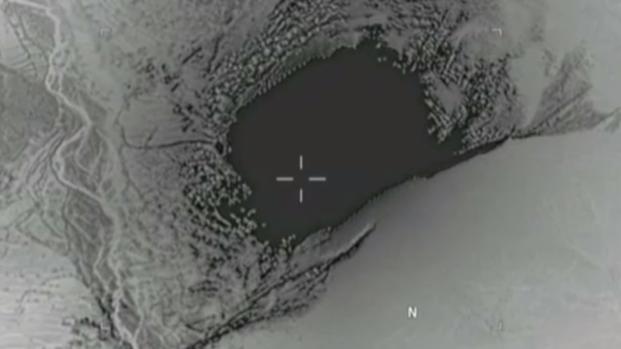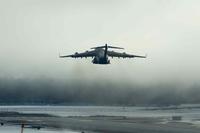The U.S. Defense Department on Friday released video of the "mother of all bombs" detonating in eastern Afghanistan.
The black-and-white clip lasts 30 seconds and shows the 21,000-pound GBU-43 Massive Ordnance Air Blast, or MOAB -- the most powerful non-nuclear weapon in the U.S. arsenal and nicknamed the "mother of all bombs" -- slamming into the mountainside around 7:32 p.m. local time Thursday and unleashing a black plume of smoke.
%embed1%
The strike -- which marked the first time the munition was used in combat -- targeted a tunnel complex in the Achin district in Nangarhar province used by the militants affiliated with the Islamic State of Iraq and Syria's branch called Khorasan, or ISIS-K, which operates in Afghanistan and Pakistan.
At least 36 ISIS fighters were killed in the bombing, the Associated Press reported, citing Afghan officials.
The use of the weapon made headlines around the world and thrust the war in Afghanistan -- where roughly 8,400 U.S. troops are serving along with thousands more NATO forces -- back into the spotlight.
U.S. military officials downplayed the fact that the strike occurred in the same province where a Green Beret -- Staff Sgt. Mark R. De Alencar, 37, assigned to 1st Battalion, 7th Special Forces Group (Airborne), Eglin Air Force Base, Florida -- was killed by enemy small arms less than a week earlier.
U.S. officials and independent defense experts also defended the use of the munition, given the difficult terrain and low probability of civilian casualties in the area.
Gen. John W. Nicholson, commander of U.S. Forces-Afghanistan -- who reportedly said U.S. forces in Afghanistan called in the MOAB strike, not officials in Washington -- said militants are facing dwindling numbers and turning to improvised explosive devices, or IEDs, and tunnels to thicken their defenses.
"This is the right munition to reduce these obstacles and maintain the momentum of our offensive against ISIS-K," he said in a statement.
Meanwhile, nuclear experts also highlighted how the yield of the ordnance doesn't compare to that of nuclear blasts.
%embed2%
Alex Wellerstein, a professor at the Stevens Institute of Technology in Hoboken, New Jersey, tweeted a graphic showing the relative blast zones of the W88 and W76 thermonuclear warheads, Little Boy atomic bomb and the MOAB.
"Which is just to say: MOAB is big for a conventional weapon, but it is still orders of magnitude smaller than most nuclear weapons," he wrote in a subsequent tweet.








